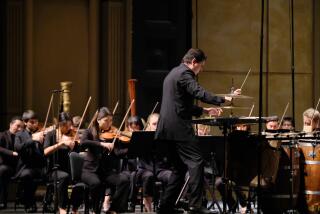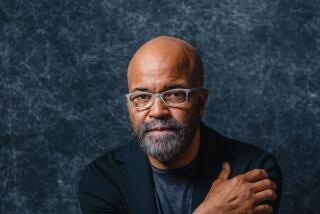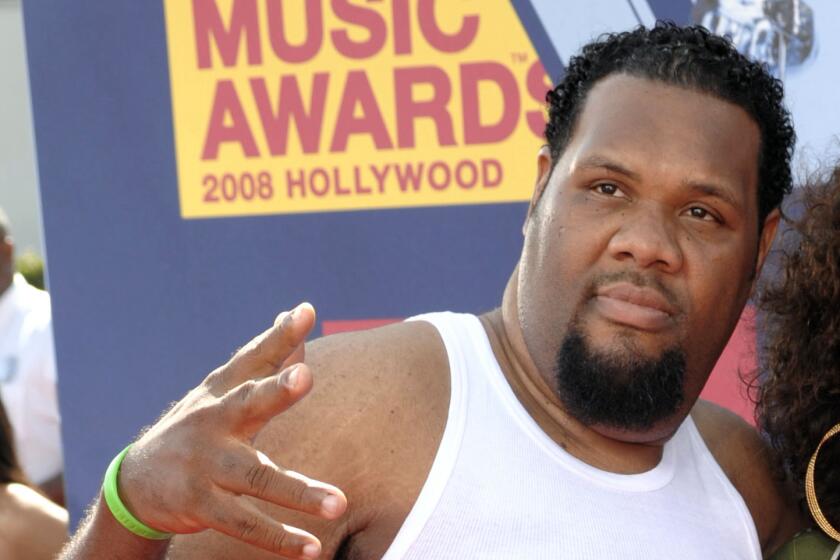JAZZ : The Future? Well, You Needn’t Worry
WASHINGTON — The annual competition sponsored here last weekend by the Thelonious Monk Institute of Jazz is a continuing reminder of the growing number of young musicians who are playing an increasingly vital role in shaping the future of jazz.
The winner in the 1987 inaugural competition was pianist Marcus Roberts, who went on to work with Wynton Marsalis and now leads his own acclaimed group.
Joey De Francesco, who at 15 was a finalist that first year, is now one of the most-talked-about jazz organists, with a series of Columbia albums.
Last year’s winner, the phenomenal trumpeter Ryan Kisor--then a 17-year-old high school senior from Sioux City, Iowa--will release his first Columbia album soon. He and De Francesco were on hand at the institute’s fifth annual competition--devoted to saxophonists--making guest appearances on the concert’s finale last Sunday.
“These affairs have never been strictly for amateurs,” Thomas Carter, executive director of the Monk competitions, said last weekend. “We received almost 300 saxophone tapes from all over the world, and most of them were from people who have had professional experience. The only limitations are a maximum age of 35, and no contestant may have an album out under his own name.”
The competition is named for the late pianist and composer, whose son, Thelonious Monk Jr., is chairman of the institute. The competition was devoted to pianists for three years and last year to trumpeters.
In an emotional climax to this year’s competition at the Smithsonian Institution’s Baird Auditorium, 22-year-old tenor saxophonist Joshua Redman won the $10,000 top prize with a potently self-possessed three-tune performance.
Redman was selected from a field of six finalists by a panel of distinguished judges: Benny Carter, Jimmy Heath, Jackie McLean, Branford Marsalis and Frank Wess. The winner, a recent graduate of Harvard University with a bachelor’s in social sciences, is the son of pioneer avant-garde tenor saxophonist Dewey Redman.
Throughout the two days, astonishingly high levels of talent were displayed--not merely of technical expertise but in many cases a degree of creativity that would have put many seasoned pros to shame had they appeared in the days before jazz education.
Therein lies the secret: This music grows out of the schools and conservatories. Most contestants were college graduates.
For too long, what little jazz knowledge the typical student picked up in school was gleaned from teachers who were academics with relatively little empirical understanding. Today all that is changed. Significantly, the five judges here, while maintaining active sax-playing careers, have had frequent experience as teachers, holding classes and clinics at leading universities.
Typical was Eric Alexander, 23, the winner of the $5,000 second prize; he received a bachelor’s degree in jazz studies from William Paterson College in Wayne, N.J., where the faculty includes a dozen jazz notables. Another competitor with a collegiate background was Finnish saxophonist Jari Perkiomaki, who trained at the Sibelius Academy’s jazz department in Helsinki.
The African-American art form has become pan-American and global: Semifinalists came from Germany, the Soviet Union, Colombia, Chile, Poland and Australia.
Australia’s Andrew Speight introduced his tunes with an accent as broad as the Sydney Opera House, yet when he tore into “Cherokee” on his alto sax, the only difference between him and 20-year-old Chris Potter of New York was in their relative stature on an overall scale of excellence. (Potter, now with Red Rodney’s band, split the $3,000 third prize with Tim Warfield, 26, a member of Marlon Jordan’s group.)
True, neither in the American nor the overseas entrants was there an epiphany, a sense that one of these youths had found a route to revolution. But one does not expect even once in a decade to find a new Charlie Parker or Lester Young. One should be satisfied that these youths offer reassuring evidence of spirit and dedication, on having modeled themselves on the right leaders. Some may yet move into higher ground, as have several former Monk contestants.
The worldwide media coverage of the Monk events (including a National Public Radio special due in late January) can hardly fail to provide a valuable propaganda medium for jazz and its young practitioners.
“When we hear talent like this, we know there has to be a place for jazz,” said Frank Wess, speaking for his fellow judges. “Jazz has never been a mass-media business, but with young people like these to sustain it, you don’t have to worry about the future.”
More to Read
The biggest entertainment stories
Get our big stories about Hollywood, film, television, music, arts, culture and more right in your inbox as soon as they publish.
You may occasionally receive promotional content from the Los Angeles Times.










